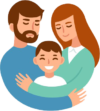Assistive technologies (AT) can range from simple physical systems like colour coding or using an agenda, to physical assistive technologies like Steven Hawking’s computer mouse, to various types of computer software. Students with LDs will most often require AT that assists with reading, language, organizational skills, and processing of information.
Software changes quickly – so we’ll just stick to describing the basic sorts of assistive technologies, and share the addresses of websites that are more thorough and which can stay more current.
Cost is often a factor, as is computer hardware; your school board will be able to tell you which programs you are already licensed to use, how to go about accessing them, and which possibilities are open to you and your classroom.
Some Useful and Relevant AT To Consider
Screen Reading Software
Screen reading software will read the text that appears on a computer screen to the user. Screen reading software is particularly useful for individuals with dyslexia, but is also used for people who are auditory learners.
Speech/Voice Recognition Software
Speech/Voice recognition software also sometimes referred to as speech-to-text software will convert the spoken word into text on a page, or into computer commands (i.e. opening files, or navigating software applications) via a microphone. Speech recognition software is particularly useful for individuals who have written expressive difficulties and difficulty using keyboards to navigate software applications.
Word Prediction Software
Word prediction software will present possible words that a user is looking for while typing text, which the user can select with a mouse click. The software will also predict the next possible word based on frequency of usage and context. This technology is particularly useful for individuals with difficulty spelling, and for people who have difficulty typing.
Optical Character Recognition (OCR)
Optical Character Recognition (OCR) software will convert paper based text into electronic text for use with screen readers. A scanner is needed to scan materials from book or other paper-based text. The OCR will then recognize the letter shapes through imaging analysis and convert them to electronic text. This technology is particularly useful for individuals who cannot access printed materials due to low vision or processing deficits.
Visual Organizers
Visual Organizers are used to present ideas, concepts, information, and related concepts in the form of charts, tables, graphs, flowcharts, and diagrams. This technology is particularly useful for individuals who have difficulty processing, analyzing, and comprehending text-based information but is also used for people who are visual learners.
Electronic Organizers
Electronic or digital organizers are hardware devices or software used for time management and resource organization. This technology is particularly useful for individuals who have difficulty with time management and organization, and is also used by people who are tactile learners and prefer opportunities where they can actually do something physically with the information they are to learn.
Reference:
https://www.ldao.ca/introduction-to-ldsadhd/snapshots/assistive-technology-a-snapshot/




Leave a Reply
You must be logged in to post a comment.